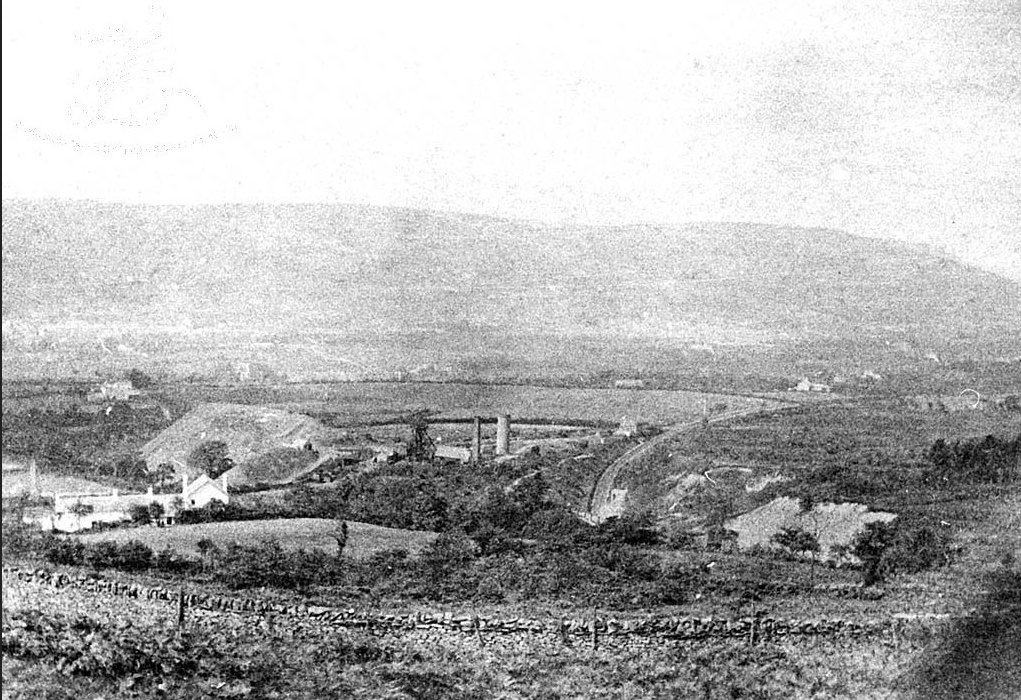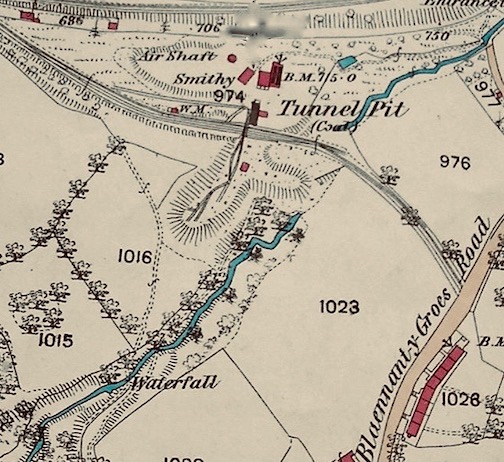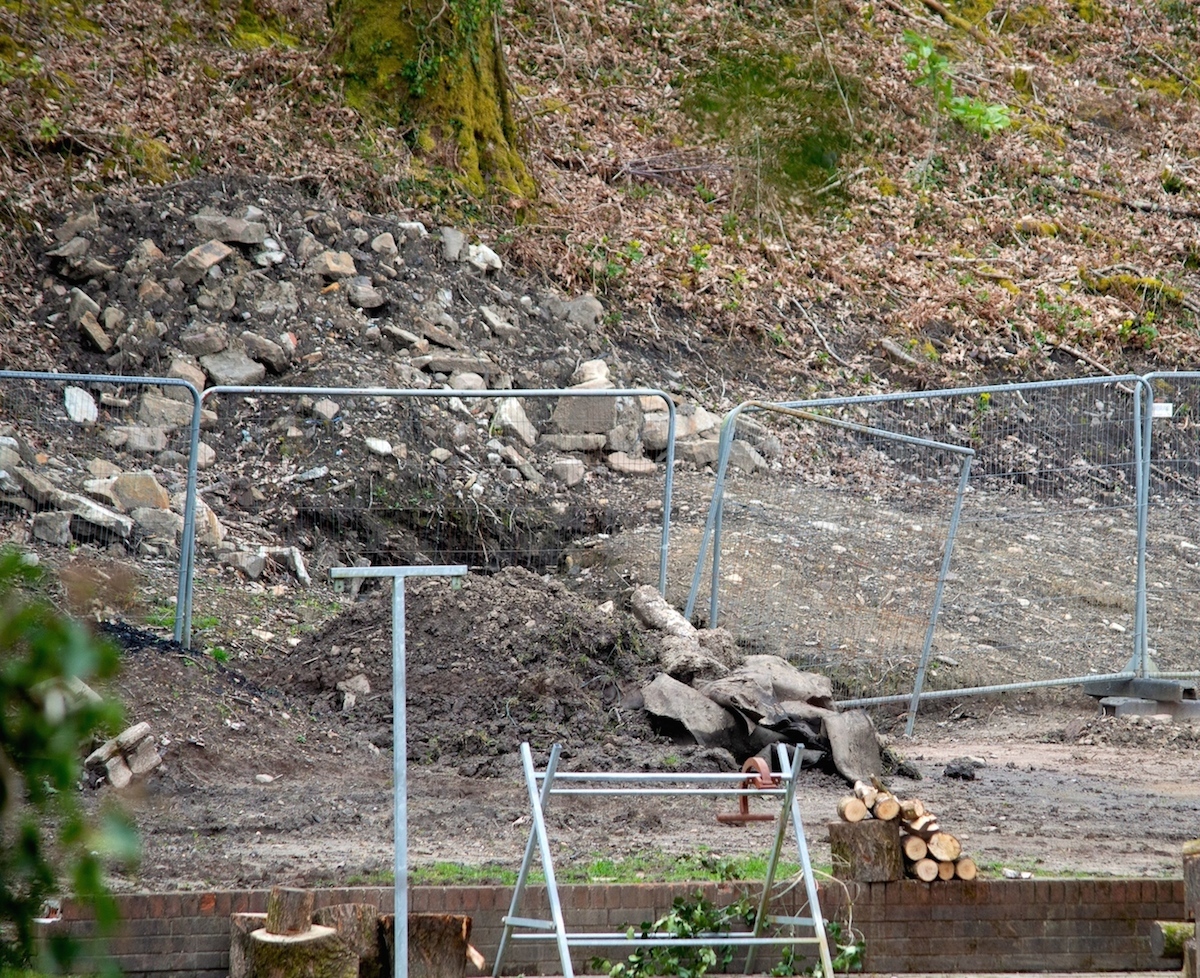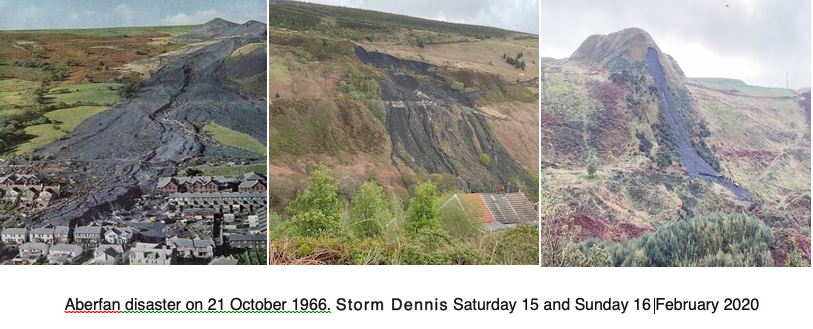The legacy of waste from Tunnel Colliery Cwmbach

Rhondda Cynon Taf Council recently purchased land in Cwmbach Aberdare the purchase price was £22,000 played for by the taxpayer, the land purchased included a privately owned category D coal tip a tip with the potential to impact public safety, to be inspected at least twice a year. The previous owner of the land was a company called Minecom Limited, whose business is open cast coal mining the company office address is 13 Huddersfield Road, Barnsley, South Yorkshire, England, S70 2LW, RCT Council advise the address for the company is at 1st Floor, Tudor House, 16 Cathedral Road, Cardiff CF11 9LJ. According to Companies House.
The site was the Tunnel Colliery opened in 1865 and closed in 1910 it was owned by Aberdare Iron Co, Richard Fothergill he built a mansion at Aber-nant later the home of S. Michael’s College and the Aberdare Hospital.

So the question to the RCT Council was, do the owners of privately owned coal tips contribute to the cost of monthly inspection of their coal tips by taxpayer-funded engineers? The reply was: No. Landowners may separately and independently inspect tips on their land.
We are informed RCT Council inspect coal tips in person by engineers every month, who pays for the inspection of privately owned coal tips? The council responded: The council is in receipt of Coal Tip Safety Grant Funding, which covers the cost of inspections. So taxpayers fund private coal tip inspections.
Another question was coal tip inspections are taxpayer funded: What is the average cost of a coal tip inspection as this sum would vary as access would be a problem then there is the 3D map for each site, motion detecting sensors, and remote cameras to monitor drainage and transport?
The reply: Costs of tip inspections are not separately recorded for individual tips; therefore an average cost is not available. So why is the council or government not recovering the high cost for coal tip inspections from the landowners?
The question: How many coal tips within the boundary of RCT are privately owned? The Council informed us that there is 157 Coal Spoil Tips wholly privately owned within the boundaries of RCT this must be costing the taxpayer millions and that’s before any work on the tips. We then asked, do RCT Council intend to purchase all privately owned coal tips within the boundaries of RCT? The council replied No.
What is the cost to taxpayers to remove the Category D coal tip in Cwmbach?
The reply: No recorded information is held. We would have thought the Director of Corporate Estates would have primarily calculated for the work required to make the tip safe before purchasing the land or the council don’t want to show the total amount of cost to purchase a private coal tip and making it safe.
AberdareOnline asked the question Please can I have copies of the reports and all correspondences for the Category D coal tip in Cwmbach to and from RCT Council Natural Resources Wales Coal Authority Welsh Government?
We consider this part of your request to be manifestly unreasonable, therefore we are applying Regulation 12(4)(b) of the Environmental Information Regulations 2004. To locate, extract and present the information that you have requested would require many hours of officers time.
In accordance with Regulation 14 of the Environmental Information Regulations 2004, this email acts as a Refusal Notice to this element of the request.
AberdareOnline also contacted The Coal Authority about Coal Tips in Cynon Valley and singled out the land and coal tip purchased by RCTC in Cwmbach Aberdare, the reply from the Coal Authority: Copies of reports from 2019 and 2020 for the coal tip near Blaennantygroes Road and via a footpath off https://www.welshcoalmines.co.uk/GlamEast/cwmbach.htmAberdare?
Coal Authority: I have attached a copy of the inspection report during the specified time period for this tip.
Following a review of the document, I have considered that exemptions apply to its content. Where applicable you will see that content has been redacted by means of a black panel.
This has been done under Section 40(2) of the Freedom of Information Act 2000 – That the information constitutes personal data of which the requestor is not the data subject. This is an absolute exemption and does not require a public interest test.
Under the provisions of Section 17(1) of the Freedom of Information Act 2000, we have partially refused your request under the section set out above.
We also asked The Coal Authority: The coal tip in Cwmbach that I am informed was purchased by Rhondda Cynon Taf Council from a private owner, I am informed this coal tip was once owned by The Powell Duffryn Steam Coal CO. LTD. The National Coal Board took over PD in 1947. When did the NCB sell the Cwmbach coal tip? And what was the purchase price?
The Coal Authority responded: A search of our historical property records confirms that the National Coal Board, British Coal Corporation or Coal Authority has never owned the land in question provided in your link.
We asked the council has the contract to remove the coal tip had been put out for tender. The council’s response was: No.
We asked what the final use of the land be used for landscaping or future development.
The Council’s response was: There is restrictive covenant in the original transfer prohibiting any development of this land.
RCTC Cabinet meeting held on Monday, 18th September 2023
13. ACQUISITION OF LAND TO THE EAST OF CENARTH DRIVE CWMBACH, ABERDARE To receive the joint report of the Director of Corporate Estates and Director of Highways, Streetcare and Transportation, which seeks authority to acquire the Freehold interest of land to the east of Cenarth Drive Cwmbach, Aberdare comprising land immediately adjacent. The land is also known as Tunnel Tip, Cwmbach.
List of all Colliery in the Cynon Valley
Below: part taken from the Sage Journals
Disused coal tip management in Wales: environmental regulation under climate change
Environmental legislation discussed in the Law Commission Report
Despite the 1969 Act’s intent to empower immediate action to prevent a tip disaster, and the intent of subsequent regulations to protect environmental health, the present body of law can stand in the way of carrying out urgent operations to reduce the likelihood of a tip failure or respond when such a failure occurs. Although the Law Commission Consultation Paper examined the potential for other legally enshrined powers of intervention to be activated to circumvent these constraints, most of these powers could face the same legal problems.
For example, under Part 3 of the Environmental Protection Act of 1990, a coal tip might possibly be seen as a statutory nuisance, defined as ‘an accumulation or deposit which is prejudicial to health or a nuisance’.23 This definition dates back to 1846, a time prior to the emergence of germ theory when the Victorian public health fear was of miasma emanating from the deposits (thought to be the source of disease). Specific accumulations targeted by earlier laws have included cinders and ashes24 and, at one time, coal tip fires.25 The fact that these ‘accumulations’ were specifically mentioned in legislation tends to suggest that there were doubts as to whether the more general formulation of ‘accumulation or deposit’ would have covered these specific risks, each of which related in some way to fires. Subsequent interpretations of ‘statutory nuisance’ have limited public health legislation to risks of ‘disease or ill health, not … physical injury’,26 which could exclude acute events like tip failures.
Even if this provision could apply to the risk of coal tip failure, however, the service of an abatement notice on a landowner would in no way exempt that owner from the need to obtain any regulatory permits or permissions to undertake the work.27 The Law Commission Report discusses some of these constraints, which could render tip safety measures unlawful if not accompanied by cumbersome and time-consuming permits that would delay and complicate both emergency and remedial action. In its Consultation Paper, the Law Commission considers other regimes that might allow interventions to curb risks of coal tip failure without these constraints. For example, the Law Commission indicates that the transposition of the EU Environmental Liability Directive (ELD) into Welsh Law28 could ‘provide preventative powers in relation to an imminent threat of environmental damage, which could include coal tip failure’.29
There are two major limitations to this ELD approach. The first is that the ELD regards liability only in a prospective manner. It does not apply to damage resulting from an ‘event, emission or incident’ that took place before 30 April 2007, or an ‘event, emission or incident’ that ‘derives from a specific activity that took place and finished’ before that date.30 As discussed above, most coal mining activity had ceased by this date, which would exclude most tips from coverage under this directive. Secondly, primary liability under ELD falls on-site operators who hold permits in accordance with EU law, and, again, most coal tips will never have been subject to such permits. Consequently, transposing the ELD into Welsh Law is unlikely to grant effective powers of intervention.
Another possible statutory power to address the risks presented by coal tips is Part 2A of the Environmental Protection Act of 1990 – the so-called ‘contaminated land regime’. The Law Commission in their Consultation Paper stated that the environmental regulator, Natural Resources Wales (NRW), had suggested ‘that Part 2A regime was unlikely to be used to deal with coal tip issues’. Although the regime could apply where tips on land pose a significant possibility of harm to receptors, including humans and controlled waters, liability would fall primarily on the ‘appropriate person’ who caused or knowingly permitted the substances to be in, on, or under the land. The practical impossibility of tracing such persons (few of whom are likely to be among the living) over numerous decades as the facilities passed into and out of public ownership31 may account for the NRW’s stance. In practice, NRW would prefer to tackle issues of land contamination through environmental permitting or planning consent. Once again, however, even if a remediation notice under Part 2A of the 1990 Act was served, demanding the remediation of a coal tip, there is nothing in the legislation to suggest that this work could be conducted without regard to other environmental controls, such as the requirement for an environmental permit in order to allow waste to be removed from the site.
Finally, the Law Commission considers the potential use of the Civil Contingencies Act of 2004 to address coal tips. Under this legislation, a power of direction could be put in place by an order of the Welsh Ministers. However, the list of actions allowed by order in the Civil Contingencies Act may not be sufficiently inclusive to address emergency action in relation to a coal tip. Furthermore, once again, even if this power was employed, there is no express provision to allow Welsh Ministers to enable a responder to bypass permitting and planning controls. The Law Commission in its report favoured a power exercisable by Welsh Ministers to give directions in the event of a tip emergency, and this proposal received wide support during the consultation process.32 This approach does not eliminate the need to provide legislative powers that would allow other pertinent regulatory duties to be temporarily overridden in the wider public interest.



